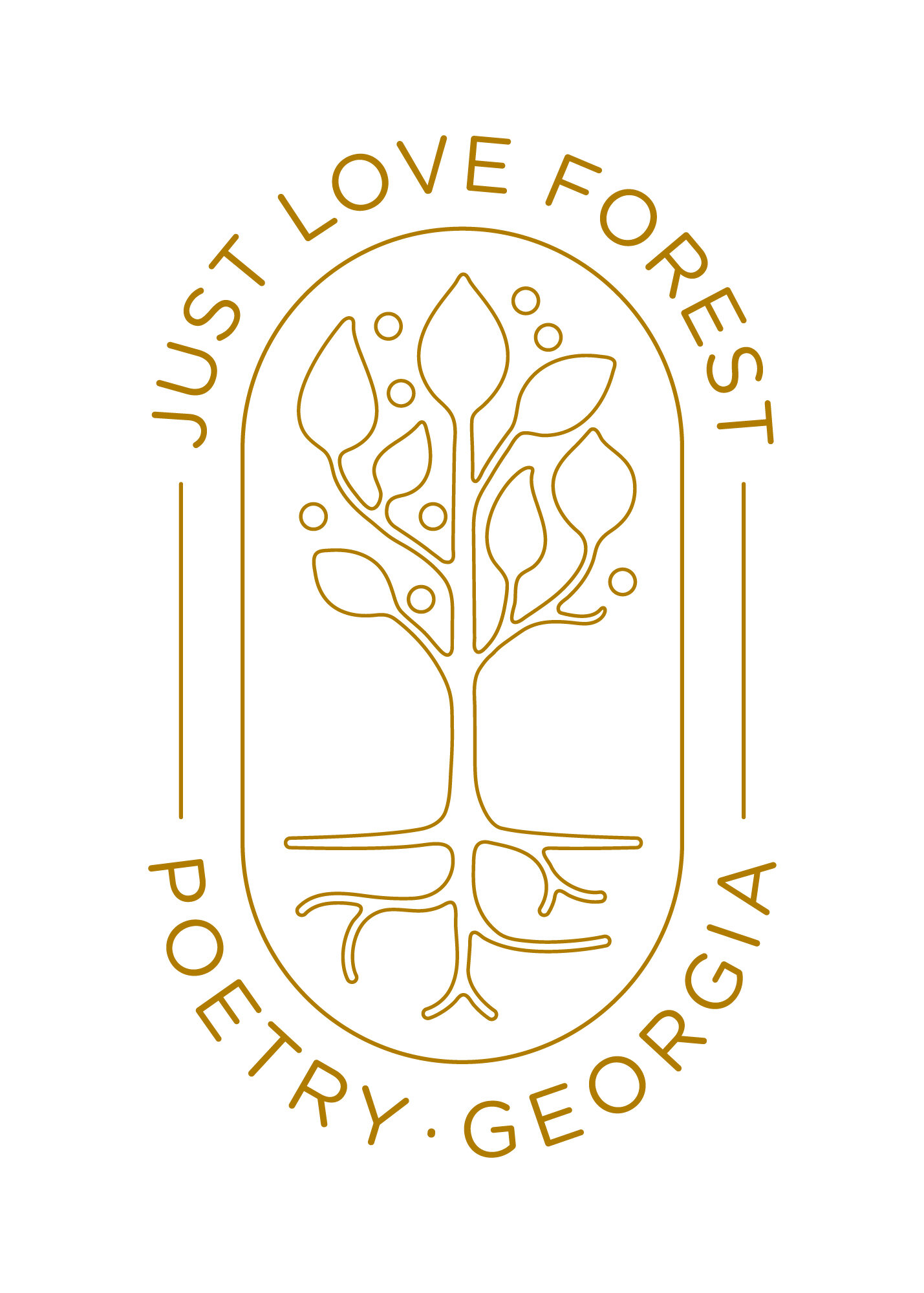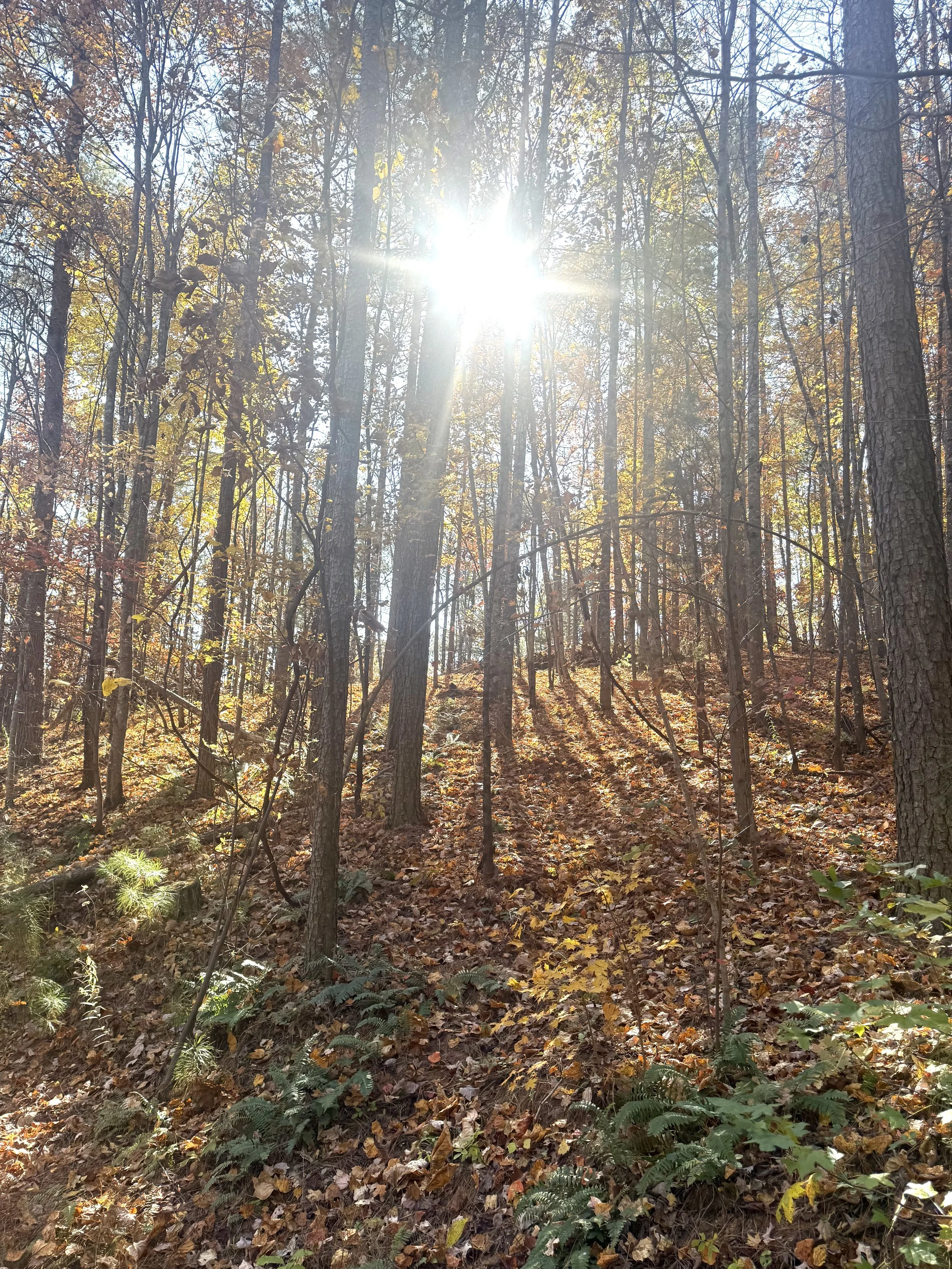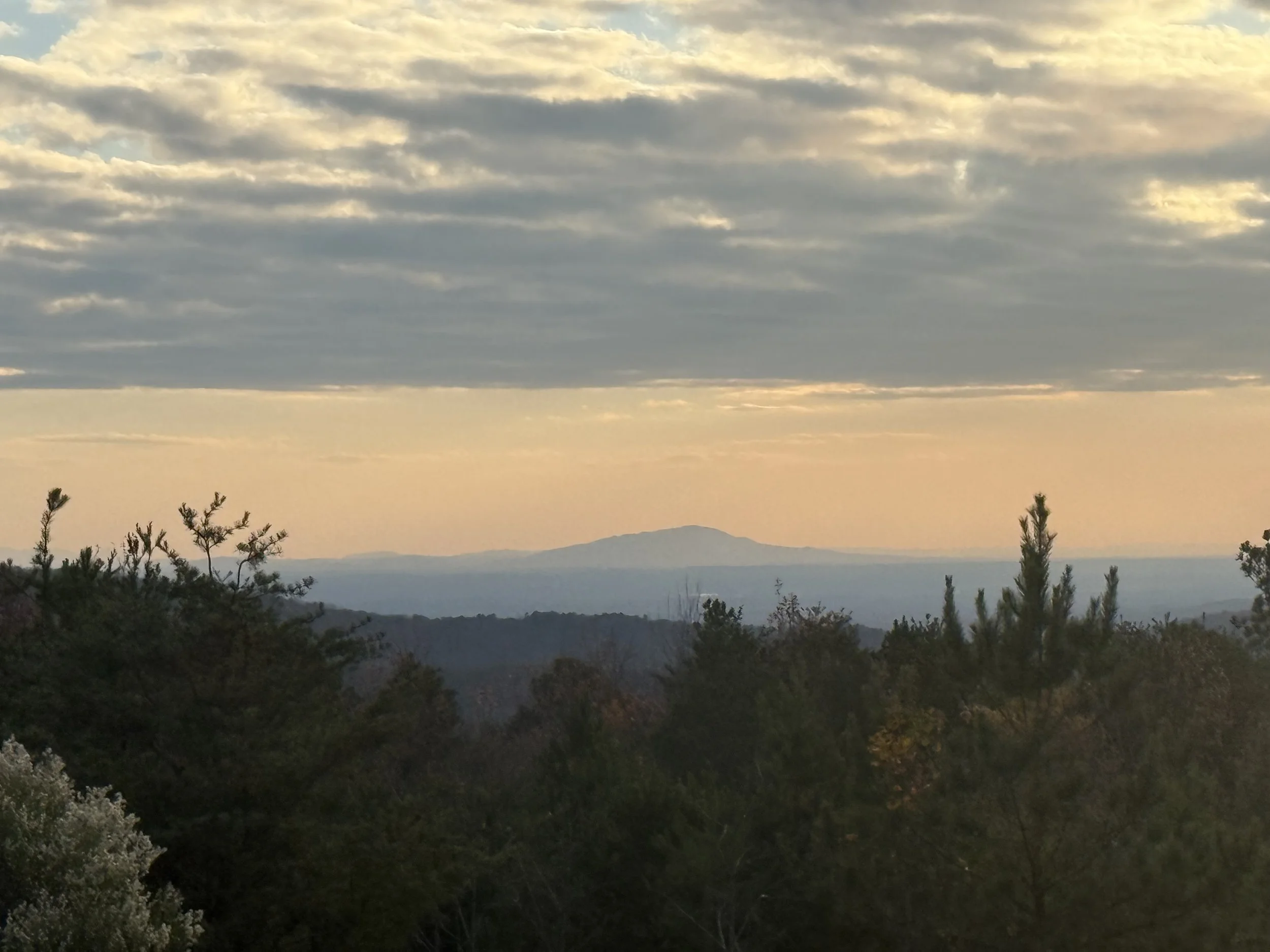The Just Love Forest Ashram
Sevak Experience
Living as Modern Forest-Dwellers (Vanaprastha) at Just Love Forest Ashram
There was a time when forest-dwellers were everywhere - sages, wanderers, elders, lovers of God who stepped out of the world not to abandon it, but to save its soul.
Today such beings are rare.
The world has become loud, and the forest has become quiet.
But the earth still waits for those whose hearts are ready. As part of the Just Love Forest Ashram Sevak Program, you are reviving something ancient, forgotten, and utterly necessary.
Just Love Forest Ashram rests in the foothills of the North Georgia mountains, a sanctuary where the forest itself becomes the temple. Here, devotion takes practical form through service, prayer, silence, and care for the Earth.
The Sevak Program invites dedicated practitioners to live within this rhythm of love and responsibility. It is a field of practice and remembrance - a space to embody one’s devotion through daily work, community life, and communion with nature.
The Four TRADITIONAL Paths of Love and Service
The āśrama system is an ancient way of understanding a human life as a spiritual journey. It emerged from the Vedic traditions of India and was later refined in the Upanishads and the Bhagavata tradition. Instead of seeing life as a straight line, from youth to adulthood to old age, the āśrama system sees life as four sacred movements. Each phase honors the natural evolution of a human being and offers a distinct doorway toward self-knowledge, devotion, and liberation.
These stages aren’t rigid rules. They are archetypes - timeless postures of the heart that help a person deepen in love, clarity, and service.
Here is each stage in more depth:
Brahmacharya
The path of the student
This is the phase of learning, discipline, and devotion to truth. A person studies with teachers, trains the mind, and lays the foundation for a life lived with integrity. Brahmacharya teaches focus, humility, curiosity, and purity of intention—qualities that prepare the heart for deeper spiritual work later on.
Grihastha
The path of the householder
Here, spiritual life moves into relationship, family, livelihood, and community. A Grihastha learns how to love through responsibility—how to care for others, how to create stability, how to offer one’s work to God. This stage teaches that the divine is present in ordinary life: raising children, tending to home, showing up in partnership, serving community. It is spirituality lived in the world.
Vanaprastha
The path of the forest pilgrim
Traditionally, this stage begins when one steps back from worldly busyness—not to retreat from life, but to gain deeper perspective. A Vanaprasthi spends more time in nature, listens to the rhythms of the Earth, reflects on life’s teachings, and begins sharing wisdom rather than seeking success. It is a time of integration—absorbing what the earlier stages taught, simplifying one’s life, and becoming a resource for the next generation. This is where devotion becomes more internal and where nature becomes a teacher. The forest is not an escape—it is an initiation.
Sannyasa
The path of the renunciate
In the final stage, a person releases attachment to identity, roles, possessions, and personal ambition. A Sannyasi lives in freedom, wandering in truth, seeking union with the divine alone. The world becomes their monastery. This stage symbolizes complete surrender, where everything is offered to God and only love remains.
Together, these four stages form a spiritual map.
They help a person move from learning, to loving, to integrating, to awakening.
They honor the natural arc of a human life and show that every phase -even work, family, and aging is part of the journey toward self-discovery and enlightenment.
The Sevak Program draws from this ancient wisdom, especially Vanaprastha - inviting people to step out of the noise, enter the forest, remember who they are, and serve from a place of clarity, devotion, and love.
FAQs
Who Is This For?
This program is for those whose cups are already three-quarters full. People grounded in self-discipline, sobriety, and devotion.
It is designed for those who wish to share their practice rather than seek instruction.
You may feel called if you:
Are established in a daily spiritual practice.
Feel drawn to nature as teacher, learning from seasons, wind, soil, water, and fire.
Wish to experience community and satsang as the guru, where growth arises through shared devotion.
Resonate with the Bhakti lineage of Neem Karoli Baba, Hanuman, or Anandamayi Ma.
For those who need solitude or guidance at an earlier stage, the Hermitage Program offers a quieter setting where Sevaks support individual retreatants.
What Is Seva?
Seva means selfless service offered to the Divine.
To serve the land, clean a kitchen, prepare food, or tend the garden - each is an act of love when done in awareness.
Bhakti Yoga differs from other paths in that the practitioner does not seek to merge with the Divine but to serve the Divine through love.
Service refines the heart and returns the Sevak to the quiet joy of being an instrument of the One.
What Is the Sevak Program?
The Sevak Program is for practitioners who already have a living spiritual discipline and wish to embody it in community.
It is not a place for rehabilitation or crisis recovery.
It is a working ashram where daily life is the practice.
Each Sevak participates in meditation, aarti, seva, and study while living simply in nature.
The forest becomes the teacher; community becomes the mirror; service becomes the method of awakening.
What is the Philosophical Foundation?
The Sevak Program follows the Bhakti understanding that all creation is sacred.
The Divine is not separate from the world; every being and element expresses the same consciousness.
To live as a Sevak is to care for the Earth Mother as one’s own body and to see God in every form.
What is the Purpose and Lineage?
The Sevak Program is rooted in the living spirit of Neem Karoli Baba, Hanuman, and the wider Bhakti Yoga tradition of India.
Bhakti means devotion - love expressed through action.
The path is simple and universal:
Love Everyone. Serve Everyone. Feed Everyone. Remember God. Tell the Truth.
This lineage teaches that spiritual realization is not separate from daily life.
To cook, clean, plant, or listen with awareness is to remember God.
Each act of service becomes worship; each breath, a prayer.
What are the Living Conditions?
Sevaks stay close to nature in 16-foot canvas bell tents furnished with:
Twin mattress
Small table and outdoor chair
Hammock
Simple storage shelf
Facilities Include:
Municipal water, hot water showers, compost toilets, solar charging stations, and a high-speed Wi-Fi access point.
This arrangement provides comfort while maintaining direct relationship with the land.
What to Bring?
Bring only what you truly need.
Excess possessions distract from presence.
Essentials:
Weather-appropriate clothing
Journal or notebook
Reusable water bottle and utensils
Meditation shawl or blanket
Work clothes and sturdy shoes
One devotional book
Simple altar item (optional)
Biodegradable toiletries
Flashlight or headlamp
Personal medications
Do Not Bring:
Large luggage, decorative items, unnecessary electronics, or excess clothing.
Length of Stay?
Maximum stay is 90 days.
This period allows immersion without stagnation and keeps the ashram’s field clear and focused.
Financial Offering
Participation is supported by a contribution of $20 per day, which sustains meals, facilities, and land stewardship.
Those able to give more help others with fewer means.
No sincere practitioner is turned away for financial hardship.
What’s required to apply?
Background in spiritual practice
Intention for joining the program
Skills or areas of service
Availability and desired dates
Reflection on readiness
Applications are reviewed with care to ensure alignment with the ashram’s purpose and rhythm.
How Do I Know If I Am Ready?
Ask yourself:
Is my spiritual practice already steady and alive?
Do I feel called to live my devotion through service and community?
Can I witness life’s highs and lows without losing my center?
Does the forest feel like home and teacher?
If your heart quietly answers yes, the forest may be ready to receive you.
A Message to Those Considering Applying to the Sevak / Vanaprastha Path
at Just Love Forest Ashram
A modern forest-dweller is one who:
hears the call of stillness louder than the call of ambition
chooses devotion over distraction
lives simply so others may remember their own truth
becomes a living bridge between the natural world and the human heart
A forest-dweller is not escaping the world;
they are standing at the edge of the world, holding the thread of sanity for everyone else.
This is why the world needs you.
You are not many, but you don’t need to be.
A few steady hearts can correct the course of thousands.
If you are reading this, something in your heart has already heard the call of the forest.
The Sevak Path at Just Love Forest Ashram is not a volunteer position, not a job, not a temporary escape.
It is the vanaprastha path - a modern revival of the ancient forest-dweller way.
This is for those who feel called to a life of devotion, service, simplicity, and communion with nature.
Very few people feel this call today.
If you feel it, honor it.
This path is rare, and deeply needed in the world.
1. What It Means to Live as a Modern Forest-Dweller
The world today is overwhelmed with noise, speed, and distraction.
People have lost touch with silence, with simplicity, with the natural world that holds them.
A modern forest-dweller is one who:
* longs for stillness more than stimulation
* values devotion more than accomplishment
* is willing to live gently so others may remember how to live
* wants the truth of their own heart more than the rewards of society
* seeks to align with the forest, not escape from life
Living here is not retreat.
It is deep return.
You are choosing to live where nature becomes your teacher, your mirror, and your guide.
2. Why the Sevak / Vanaprastha Path Matters Now
Humanity is starving for spiritual elders, guides, and caretakers of the earth.
Most people today do not know how to live slowly,
how to listen inwardly,
how to honor the land.
The world needs people who can:
* anchor stillness,
* hold compassion,
* create peace,
* and remind others of their own divine nature.
You may feel small, but the work you do here ripples beyond imagination.
When one person becomes steady, hundreds find steadiness through them.
This is the sacred work you are considering.
3. Who This Path Is For
You may be ready for this path if:
* your heart softens in the presence of nature
* you feel called to spiritual practice, devotion, or service
* you are nourished by simplicity
* you can live with humility and humor
* you desire transformation, not escape
* you feel joy in helping others
* you wish to participate in the birth of a living ecosystem of Unconditional Love
A true sevak is not perfect; they are available.
Available to learn, to serve, to grow, to surrender.
4. Who This Path Is Not For
This path may not be right for someone who:
* is seeking authority, specialness, or spiritual status
* cannot tolerate simplicity or quiet
* wants the forest to soothe their ego rather than melt it
* sees retreat as escape
* resents physical work or communal responsibility
* desires strict structure or constant direction
The forest reveals truth quickly.
If someone carries hidden agendas, the land will make them uncomfortable.
We honor each seeker …
but not every seeker is meant for forest-dwelling life. That’s simply the truth.
5. How We Recognize a True Sevak
We look for three qualities above all:
1. A Soft Heart
Compassion comes naturally.
You care when someone suffers.
You feel peace when someone else finds peace.
2. Simplicity
You do not need praise, titles, or control.
You can live with what is necessary and find beauty in what is small.
3. Steadiness
Not perfection, but consistency.
You return to your practice.
You show up for others without making a show of it.
Often, animals recognize these people before humans do.
If the deer don’t run, if the birds stay nearby, pay attention.
4. What Life Here Actually Looks Like
Living here means:
* daily spiritual practice
* devotional rituals (puja, arati, kirtan)
* serving visitors with unconditional love and radical hospitality
* maintaining the trails, temples, gardens, and forest spaces
* living simply and close to nature
* embracing silence, solitude, and community in equal measure
* holding space for others’ healing while tending your own
* nourishing the land, the people, and your own heart
You will grow in ways you do not expect.
You will shed things you didn’t know you were carrying.
You will touch a deeper version of yourself than you have ever met.
5. Guidance for Those Who Feel Called
Here is what we ask of you as you discern this path:
Listen to your heart before your mind.
If the forest calls, follow the call gently, sincerely.
Ask the land if you belong here.
Walk in silence.
Feel the trees.
Let the forest respond.
Hold your ego lightly.
This is not a path for pride, self-importance, or spiritual performance.
Practice devotion without expectation.
Serve because your heart wants to serve, not because you want something in return.
Remember that balance is essential.
You cannot serve others if your own inner flame goes out.
Silence, solitude, and nature time are part of your seva.
6. One More Secret…
There is something you should know, a truth the ancient vanaprasthas carried quietly:
A forest-dweller is not someone who lives away from the world.
A forest-dweller is someone who remembers the world is sacred.
If you become such a person, the land will protect you,
the path will open for you,
and your presence will quietly nourish every being who comes here.
If your heart feels this truth,
the Sevak Path may be your home.
Ram Ram Ram Ram Ram.


